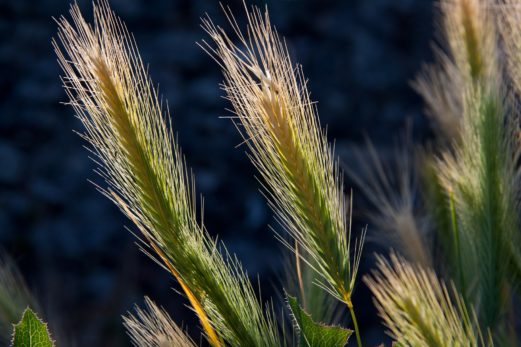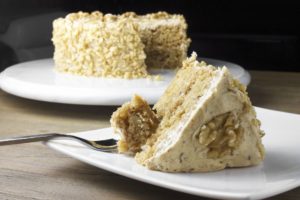How to Swap Out All-Purpose Wheat Flour
for Oat Flour And Other Gluten Free Flour
Unfortunately, for baked foods that need to rise, oat flour must be combined
with other flours and xanthan or guar gums to hold baked goods together.
Since oat flour doesn’t contain gluten, you will need to adjust your ingredients to make
your baked items light and fluffy. When making recipes that require yeast, you will need
to add more yeast if you use oat flour than when you use wheat flour.
When making recipes that require baking powder, add 1-1/2 teaspoons baking
powder per cup of oat flour. If you are using buttermilk in your recipe, replace the
buttermilk with 1/2 teaspoon baking soda for each cup of milk.
Oat flour is a perfect gluten-free flour choice when a recipe doesn’t require
gluten to rise. It adds a rich, nutty flavor to any recipe. For example,
it’s great in cookies and makes them even chewier than normal. Also on the plus
side, oat flour tends to make baked goods more moist than wheat flour. It can be
equally exchanged in recipes for the following gluten-free flours: rice flour,
millet flour, and sorghum flour.
I always grind and sift my organic oats, blend 1-1/2 cups with 1/2 cup of tapioca,
and bottle up 5 cups at a time to have on hand as needed. (You will need to toss the
hard kernels that don’t sift).
Oat flour is a fine, powdery flour that is made from ground up oats. Oats have been
a staple cereal used in both regular dietary consumption and livestock feed for thousands
of years, and are commonly consumed in the form of rolled oats or oatmeal. Oat flour
possesses all of the nutritional benefits of oats, which includes high antioxidant content,
healthy dietary fiber, and a range of vitamins and minerals.
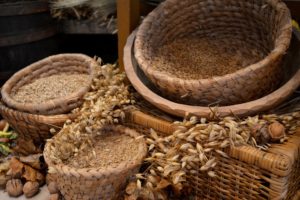
How To Make Oat flour. It is made simply by grinding rolled oats into a fine powder.
(I grind my oats. It barely takes a minute in my food processor). The resulting flour can
be used in almost any recipe that requires flour in place of gluten cereal powder, adding
a nourishing nutritive boost or enhancing texture and flavor. Incorporating oat flour into
your diet can improve your health. But you need to be careful to follow the gluten-free
recipes since baked goods with oat flour, may fall apart from softness. Recipes will
include binding ingredients.
Availability
Many people use wheat flour simply because it is available in any grocery store. Oat flour
is a little harder to find, but it can still be purchased at upscale grocers or in health food
stores. You can make your own oat flour by putting dried oats into your blender and using
the pulse setting to chop the oats into a fine powder. 1 1/4 cups of rolled oats makes one
cup of oat flour. It takes less than a minute.
Gluten Content
Many people are attracted to oat flour for their baking because it is gluten-free, unlike
wheat flour. Some people avoid gluten because of medical or dietary concerns. Gluten
is a protein that makes dough elastic and baked goods chewy. Without gluten, oat flour
can leave your baked goods heavy or the item may fall apart. Some cooks remedy this
by adding more liquid or rising ingredients to their recipes.
Since oat flour doesn’t contain gluten, you will need to adjust your ingredients to make
your baked items light and fluffy. When making recipes that require yeast, you will need
to add more yeast if you use oat flour than when you use wheat flour. When making
recipes that require baking powder, add 1-1/2 teaspoons baking powder per cup of oat
flour.
Moisture Content
Oat flour tends to make a baked good more moist than wheat flour. It is a
good choice for making cookies and quick breads for this reason. In your cookie
and bread recipes, replace up to 1/4 cup of the wheat flour with oat flour. In recipes
other than breads and cookies, you can substitute 1 1/2 cups oat flour for one cup
of wheat flour.
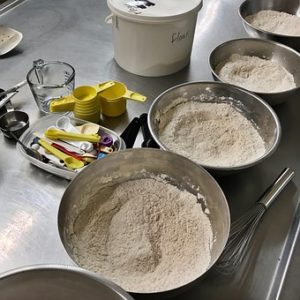
Texture
The texture of wheat versus oat really depends on what type you are using. For example,
a whole wheat flour has a thicker, grainier texture than an all-purpose wheat flour. Similarly,
some oat flours are coarser than others because of the milling process. For example, if you
make your oat flour at home, it would generally be somewhat coarser than a highly ground
oat flour. Generally, though, oat flour is much lighter and less coarse than a whole wheat flour.
Flavor
Oat and wheat flour have similar flavors, though many will find that an oat flour has
a heartier flavor than all-purpose wheat flour. It is also somewhat sweeter than whole
wheat flour, so you may consider adding less sweetener to your recipe.
Swap Almond Flour or Oat Flour for White Flour – I rarely ever use regular
flour anymore, because there are so many more nutrients and health benefits
from oat flour and almond flour than bleached refined flour. Sometimes I will mix
half and half. I love making Pumpkin Oat Waffles with oat flour, or Banana Nut
Muffins with almond flour. This is another easy 1:1 ratio swap!
Regular Flour vs. Coconut or Oat FlourA major benefit of choosing
coconut flour for your baking instead of regular, processed white flour
is that coconut flour has a lower glycemic index, and
it won’t lead to blood sugar highs and lows. It’s one of my favorite gluten-free
flours.It’s a perfect gluten-free flour choice when a recipe doesn’t require
gluten to rise, such as bars and cookies. It does soak up more moisture than
flour, so use 1/4 less than the flour recipe. Watch the wetness of your batter.
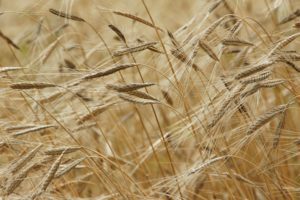
goods and can add moistness to them. It does not contain
gluten. The light texture and mild buttery, sweet flavor makes it
ideal for baking.Potato starch can be a good substitute for millet flour in
muffins and cakes.
It can lighten up the baked goods and can add moistness to them. You may
use about 1 cup of starch for every two cups of rice flour, but this may vary
according to the recipe.You may add about 1 teaspoon of xanthan gum
or guar gum to every 2 cups of flour.Sorghum Flour – Both sorghum (also known as milo) and millet have a sweet flavor.
When combined with some other gluten-free flour, it can impart a desirable flavor
and texture to baked goods.
makes very good baked goods. It can work better than most other gluten-free
flours. Make sure it is a certified gluten-free oat flour.
Although millet resembles wheat in appearance and texture, it does not contain
gluten. The light texture and mild buttery, sweet flavor makes millet flour ideal for
baking. Moreover, it is a good source of fiber, protein, important minerals like
manganese, phosphorus, and magnesium, and essential amino acids. It lends
cake-like crumb and a sweet and nutty flavor to baked goods.
It is a perfect substitute to traditional wheat flour. Experts often replace up to
25% of the flour in recipes with millet flour for added nutrition. It is not healthy
to over indulge in millet flour baked goods.Those who are diagnosed with goiter,
cannot incorporate millet in their diet. They may also find the list useful.
If you are preparing a new dish referring to a gluten-free recipe, and
the recipe calls for millet flour, which you don’t have on hand, don’t panic.
Here are ten alternatives to get you through this difficult time.
Spelt Flour
can be substituted in equal amounts for whole-wheat or all-purpose
flour in most recipes
Unlike gluten-free oat flour, spelt flour does contain some gluten (which is why it
can be substituted for all-purpose flour so easily), but it does seem to be digested
better than wheat or all-purpose flour for a lot of people.
Spelt flour, on the other hand, is a mild-flavored whole-grain flour that can be
substituted in equal amounts for whole-wheat or all-purpose flour in most recipes.
Sometimes you may use a little less spelt flour because it’s more water-soluble.
Continue to Learn More Health Benefits Of Oat Flour
baking with oat-flour

